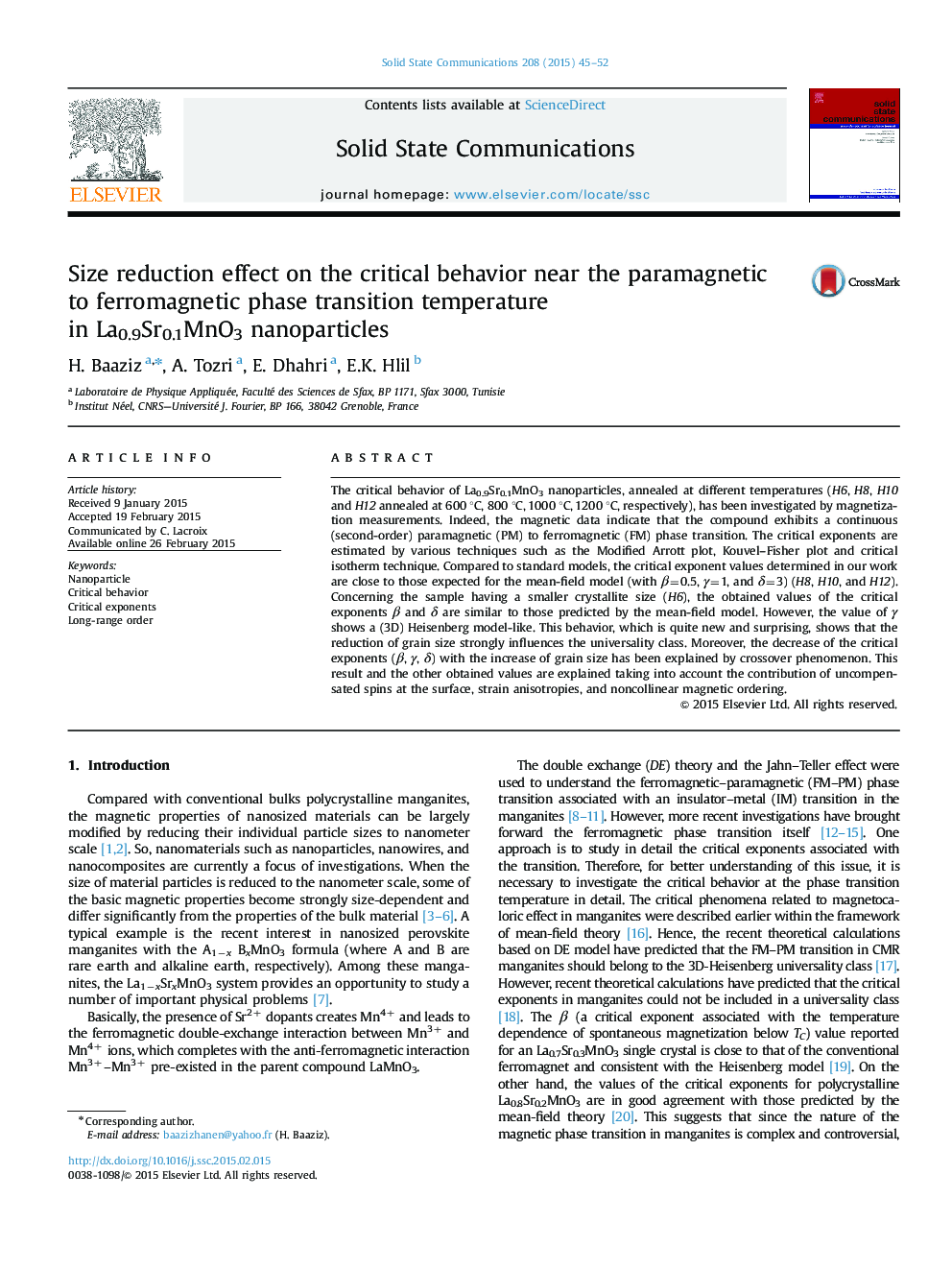| Article ID | Journal | Published Year | Pages | File Type |
|---|---|---|---|---|
| 1591561 | Solid State Communications | 2015 | 8 Pages |
•The effect of the size reduction on the critical properties is studied.•The calculated critical exponents are satisfied with the scaling theory.•The β, γ, and δ, found for H8, H10 and H12, agree with the mean-field theory.•For H6, the values of the critical exponents are similar to the Heisenberg-like model.•The obtained results are due to strain anisotropies.
The critical behavior of La0.9Sr0.1MnO3 nanoparticles, annealed at different temperatures (H6, H8, H10 and H12 annealed at 600 °C, 800 °C, 1000 °C, 1200 °C, respectively), has been investigated by magnetization measurements. Indeed, the magnetic data indicate that the compound exhibits a continuous (second-order) paramagnetic (PM) to ferromagnetic (FM) phase transition. The critical exponents are estimated by various techniques such as the Modified Arrott plot, Kouvel–Fisher plot and critical isotherm technique. Compared to standard models, the critical exponent values determined in our work are close to those expected for the mean-field model (with β=0.5, γ=1, and δ=3) (H8, H10, and H12). Concerning the sample having a smaller crystallite size (H6), the obtained values of the critical exponents β and δ are similar to those predicted by the mean-field model. However, the value of γ shows a (3D) Heisenberg model-like. This behavior, which is quite new and surprising, shows that the reduction of grain size strongly influences the universality class. Moreover, the decrease of the critical exponents (β, γ, δ) with the increase of grain size has been explained by crossover phenomenon. This result and the other obtained values are explained taking into account the contribution of uncompensated spins at the surface, strain anisotropies, and noncollinear magnetic ordering.
